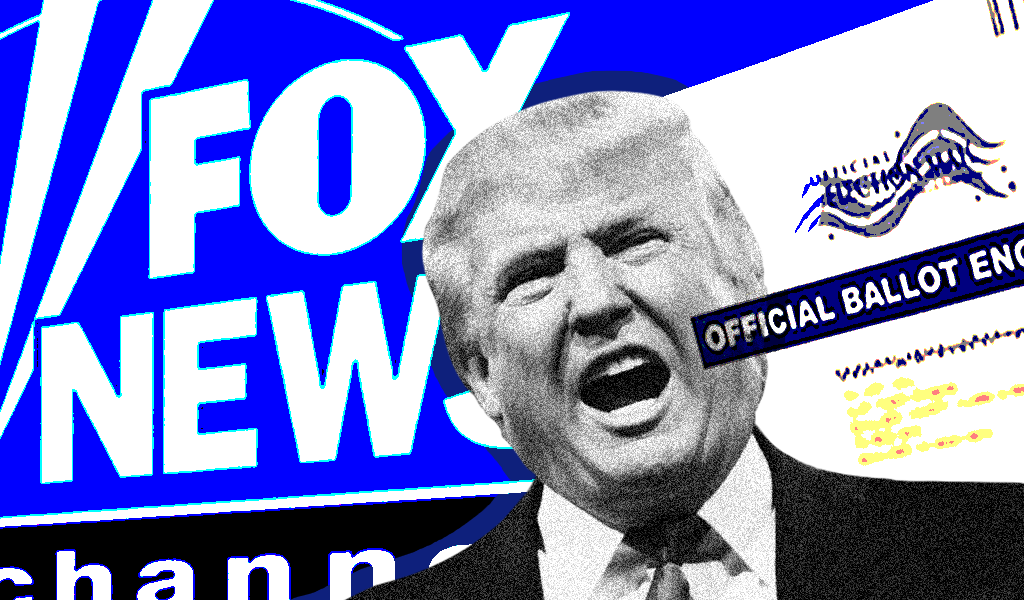How Trump’s right-wing media diet fueled his “bogus” election fraud conspiracy theories

While Donald Trump’s top aides were telling him that his claims of widespread fraud in the 2020 election were false, the then-president was busy promoting deranged conspiracy theories to his Twitter followers that he was seeing on Fox News and its far-right competitors.
Monday’s hearing of the House select committee probing the January 6 insurrection featured videotaped testimony from a series of senior Trump campaign and administration officials who said they had informed the then-president that there was no credible evidence the election had been rigged, but that they had been ignored or sidelined. Notably, Trump campaign manager Bill Stepien said the president had been briefed before the election on the “red mirage” phenomenon he would cite as evidence of voter fraud; that he had told the president he had no basis to declare victory, as Trump did hours after polls closed; and that he later advised the president that his odds were “very, very, very bleak,” to no avail. And former Attorney General Bill Barr recounted that he had repeatedly explained to Trump that his claims of fraud were “bullshit” and that he concluded the then-president had been “detached from reality” if he believed the “bogus and silly” claims.
But while people like Stepien and Barr were telling Trump his election fraud claims were false, the then-president’s trusted TV propagandists were telling him what he wanted to hear: Fraud had been rampant and the election was rigged against him by malevolent forces. Trump chose to amplify that fraudulent and reckless message to his supporters, stoking the fury that ultimately targeted the peaceful transition of power on January 6, 2021.
Trump sent at least 76 tweets in response to right-wing TV programming about purported fraud in the 2020 election in the weeks between Election Day and the January 6 riot spurred by his incitement. Of those live-tweets, 47 responded to Fox News and an additional 9 to its sister network, Fox Business, with One America News (18) and Newsmax (2) generating the remainder. These counts don’t include Trump’s standard practice of tweeting out raw video clips from the networks, including their bogus coverage of election fraud.
Fox’s programming shapes Trump’s worldview. He watched hours of the network’s coverage daily and used it as prompts for his public statements on Twitter throughout his presidency. Trump sent at least 1,373 tweets in response to things he saw on his television between September 1, 2018, and his permanent suspension from the service on January 8, 2021, according to data I compiled. Roughly 94% of those live-tweets were driven by Fox News or Fox Business.
Trump’s TV-and-Twitter obsession generated unhinged conspiracy theories, authoritarian attacks on his Democratic opponents and the press, diplomatic incidents, and even threats of war – but few of his fixations were as dangerous as the seditious attacks on democracy he amplified to his supporters about the 2020 presidential election in response to programming he watched on Fox and its rivals.
In the months before the election, Trump and his allies floated a dark alternate path to victory, in which Republican-appointed judges would throw out enough legally cast ballots for him to carry key swing states. That strategy was aided by the Trump-Fox feedback loop: Fox would fearmonger about the prospect of widespread election fraud, and then Trump would promote those segments to undermine confidence in the results. This happened at least 18 times before Election Day, with Trump declaring in response to various Fox segments that vote-by-mail had “tremendous potential for voter fraud” and would lead to “the most CORRUPT ELECTION in our Nation’s History.”
Hours after the polls closed on Election Day, Trump followed through with his plan and falsely declared that he had been the victim of massive voter fraud and had actually won the election. His campaign staff had told him that he had no basis to declare victory, several of his allies publicly rebuked his actions at the time, his path to victory quickly evaporated, and by that Saturday, several major media outlets had called the race for Joe Biden – including Fox.
But rather than bending to reality, Trump lashed out at the democratic system – and his Fox propagandists quickly got in line and began touting false and nonsensical fraud accusations to bolster his position. That coverage, in turn, both seemed to harden Trump’s intransigence and provided him with ammunition he could cite to his followers. Over that weekend, Trump sent at least 16 tweets highlighting Fox coverage that used misinformation to undermine the results of the election. Notably, that Sunday morning, Trump live-tweeted Fox contributor Newt Gingrich’s claim that the Democrats were “thieves” and “this was a stolen election.”


